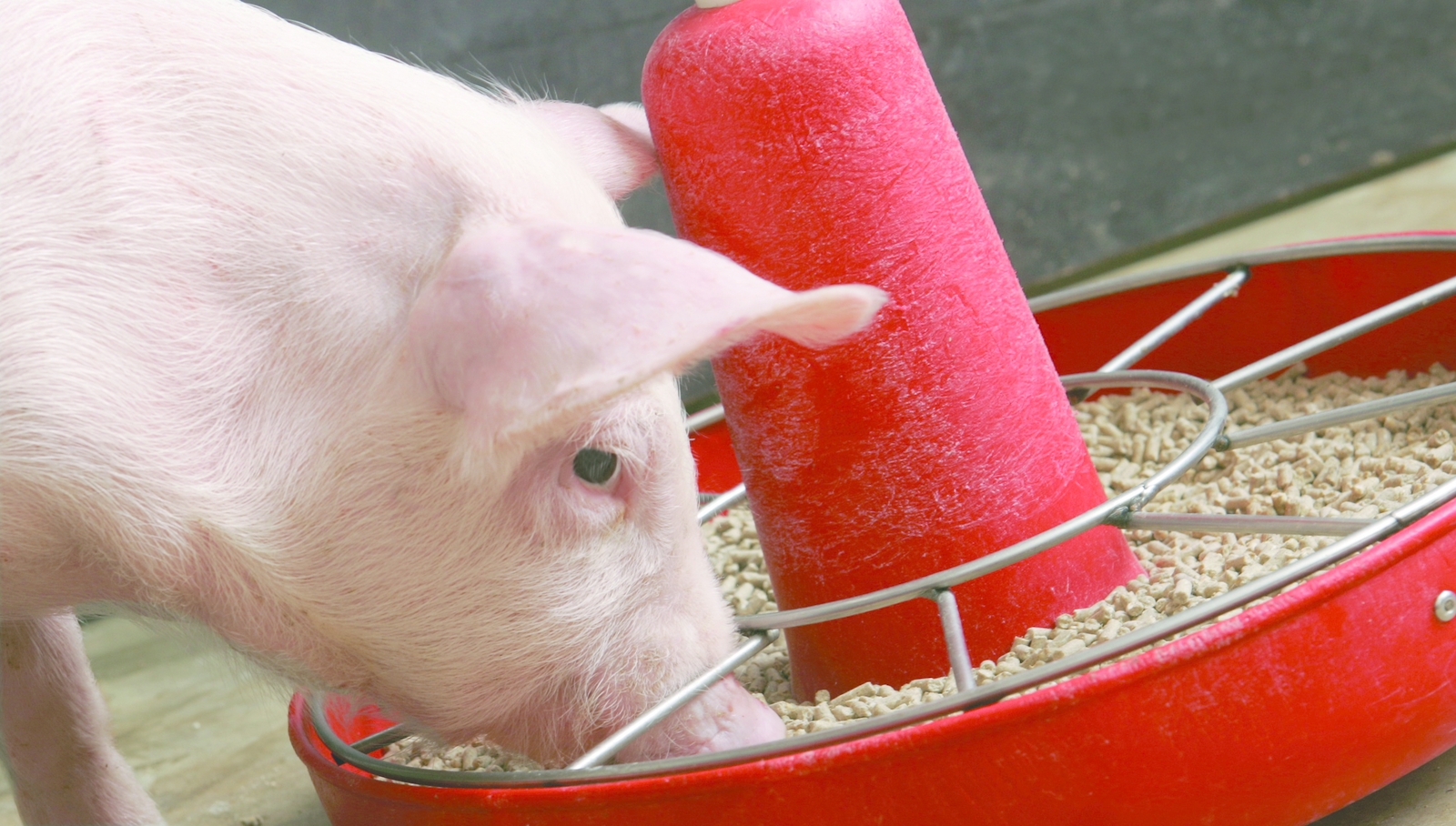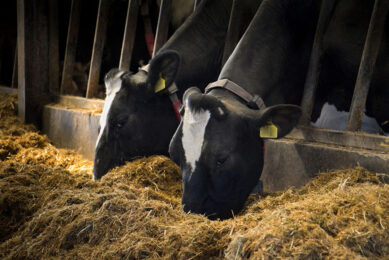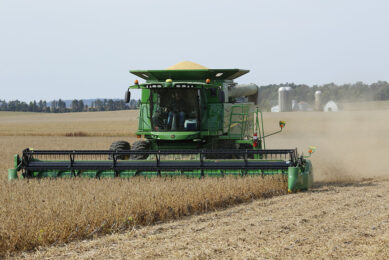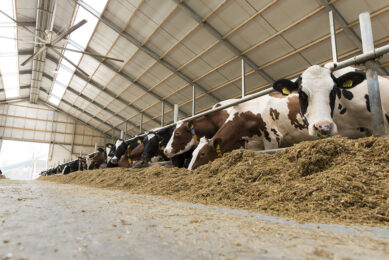Animal fat: Nutritious ingredient for animal diets

Adding a feed or oil ingredient supplies the animal with essential fatty acids, needed for production and growth. But the digestibility of the fatty acids can vary between animal species and age groups. The effectiveness of including a fat or oil also depends on the total feed formulation. In this article we explain what nutritionists should consider.
In the past feed grade animal fat was derived as a slaughter by-product as well as from dead (recycled) animals. Nowadays in the EU (category 3) animal fat is only derived from pre and post slaughter inspected animals. Also the major streams of animal fat are separated (coming from designated slaughtering facilities) resulting in tallow, lard and poultry fat. Extracted animal fat does not contain animal protein and therefore does not pose a risk of TSE. From this perspective animal fat and specifically poultry fat and lard are safe to use in animal feeds.
Compositions of different oils
In Table 1, the fatty acid composition of common fats and oils is shown. The major differences are that coconut, palm kernel and palm oil are highly saturated fats (ratio between unsaturated and saturated fatty acids (u/s ratio) < 1.5). In addition, coconut (and palm kernel) oil are high in medium chain fatty acids, specifically C12:0 (lauric acid). Palm oil is high in palmitic acid (C16:0) and oleic acid (C18:1). The other plant oils are high in unsaturated fatty acids: Rapeseed oil is high in C18:1 (n-9), sunflower seed, soybean (and maize) oil are high in C18:2 (linoleic acid, n-6) and linseed oil is high in linolenic acid (C18:3, n-3). The u/s ratio is typically very high (>5). Tallow is low in polyunsaturated fatty acids (PUFA) due to bio-hydrogenation in the rumen. The end product of fatty acid synthesis from volatile fatty acids is mainly C16:0 and C18:1. Consequently the content of C16:0, C18:0 and C18:1 is high in tallow. Butterfat (and sow milk fat) on the other hand contains some medium chain fatty acids. Lard is higher in C16:0 and C18:1 than poultry fat since these two fatty acids are the primarily end products of fatty acid synthesis from starch and consequently deposited as body fat in pigs. The fatty acid composition of non-ruminants (lard, poultry fat and fish oil) is largely influenced by the amount and type of fat that has been fed to the animals.
Specific fatty acid usage
The fatty acid composition of fats and oils determines the nutritional and economical value in several ways. First of all there is a need to supply the essential omega 3 (or n-3) and omega 6 (or n-6) fatty acids via the feed. This is in general limited to the polyunsaturated fatty acids linoleic (C18:2, n-6) and linolenic acid (C18:3, n-3). A minimum requirement for C18:2 is in general easily met by the addition of fat rich grains or grain by-products and lard or poultry fat in combination with plant oils like soybean oil (layer feeds). On the other hand if for carcass (e.g. bacon) quality a maximum restriction of C18:2 (and/or C18:3) is used the inclusion rate of the highly unsaturated plant oils or fat rich grains and grain by-products have to be limited. If n-3 rich animal products need to be produced, a maximum n-6/ n-3 ratio should be used in at least the finisher feed. In practice a source of linseed oil (rich in C18:3) will has to be added.
The inflammatory response is regulated in the animal by the ratio between the long chain polyunsaturated fatty acids (LC-PUFA) archidonic (AA C20:4, n-6) and eicosapentanoic (EPA C20:5, n-3). AA is pro-inflammatory and EPA anti-inflammatory. The ratio of AA/EPA can be influenced by the direct addition of EPA and DHA from algae and deep sea fish oil (salmon oil) or by the C18:2/C18:3 ratio in the feed since LC-PUFA are synthesised from these in the animal (by elongation and desaturation). Docosahexanoic (DHA C22:6, n-3) rich oils are often used sow feeds to reduce crushing of piglets and increase fertility. Medium chain fatty acid (MCFA) sources like coconut or palm kernel oil (mainly C12:0) or the extracted fatty acids of these (PKFAD often C6:0, C8:0 or C10:0) offer specific benefits in terms of maintaining gut health and litter quality while improving average daily gain (ADG) and feed conversion ratio (FCR) in young animals. The energy value of MCFA are lower than of long chain fatty acids (LCFA). The anti-microbial effects are increased when used in combination with organic acids or essential oil.
Feeding value of fats and oils
The ratio between unsaturated and saturated fatty acids (u/s) in the complete feed influences the fat digestibility to a large extend. The degree of saturation of a fatty acids strongly influences the melting temperature and therefore the ability to be emulsified in the gut lumen by bile acids. Since saturated fatty acids
Effect of digestibility
Fat digestibility is species dependent (lower for poultry than for pigs), age dependent (lower for young animals) and strongly influenced by gut health (dysbacteriosis, mycotoxins etc). However the energy density of feeds for young animals and broilers is in general considerably higher leading to higher additions of fats and oils. Intact fats (tryglycerides) can form monoglycerides which aid the emulsification of hydrolysed free fatty acids. For sensitive species and young animals the amount of (added) free fatty acids as a ratio of the total fat content in the feed should be maximised (leading to restrictions on the usage of PFAD and fatty acid mixtures). The gross energy content and digestibility of the different fats and oils has the strongest influence on the nutritional and economical value.
Although e.g. the gross energy content of medium chain fatty acid sources like coconut or palm kernel oil is lower than that of longer chain fatty acids, the digestibility is very high. Resultantly the ME or NE is comparable. As mentioned the u/s ration in the finished feed is a determining factor for fat digestibility. With the usage of a minimum u/s ratio, different fats and oils can be combined in feed formulation upgrading the digestibility of otherwise low digestible saturated fats (like tallow and palm oil). The position of the saturated fatty acid on the triglyceride also determines fatty acid digestibility since the absorption of saturated fatty acids like C16:0 and C18:0 as monoglycerides (on the sn-2 position) is greatly enhanced over that of free fatty acids hydrolysed from the sn-1 and sn-3 position of triglycerides by lipase. Lard has therefore a 7% higher fat digestibility than palm oil for pigs and 14% for broilers, although the fatty acid pattern is similar.

Close up of lard. Lard has a higher fat digestibility than palm oil when used in pig and poultry diets.
Analyse total fatty acid content
Fat is in general analysed as ether extract, with or without prior acid hydrolyses. Consequently fat soluble products (waxes, oxidised and damaged fatty acids) which cannot be used for ATP production will dilute the (gross) energy content of the fat or oil. It is therefore recommendable to determine the total (identifiable) fatty acid content via gas chromatographic analyses. When correcting for the glycerol content based on the amount of free fatty acids in the product the so-called rest fraction can be calculated and the gross energy content be adjusted accordingly. Fat products that have been exposed to an extensive heat treatment during extraction or distillation contain on average a low 3% (PFAD), medium 4-5% (animal fat) or even high 7-8% (fatty acid mixtures) rest fractions.
Total feed composition counts
The overall feed composition, feed processing and total feed (energy) intake influences the digestibility and fate of added fats and oils. High fibre levels in feeds (often leading to an increased fats and oil addition because of the low energy content of fibre rich by products) will decrease fat digestion due to increased endogenous losses. Feeds high in starch and sugars (fed in excess of maintenance requirements) will increase de novo fatty acid synthesis (leading to primarily C16:0 and C18:1 synthesis) and fat deposition. Feed processing will decrease particle size and specifically increase fat digestibility in by-products of plant oil extraction like soy bean, sunflower, palm kernel or rapeseed meal. An increased viscosity due to the heat treatment of grains will positively influence digestion in pigs the first 2 weeks post weaning, but will have a negative effect in broiler feeds. The addition of emulsifiers, generally consisting of phospholipids, can enhance fat digestion under (gut health) circumstances where fat digestion is compromised or poor quality fats are used.
Considerations for feed formulations
Fats and oils are high energy sources. Consequently, when fats and oils are relatively cheap compared to starch-rich grains and grain by-products often high fibre (low energy) feedstuffs become attractive. Feed costs can therefore be reduced when higher amounts of fats and oils can be used in feed production. The spraying of animal fat or plant oils with a lower u/s ratio (to maintain pellet hardness) in either the mixer or after pelleting (coating) is often needed in order to increase the inclusion level. From a nutritional standpoint, the amount of (fermentable) carbohydrates might need to be maximised and emulsifiers might be needed if the u/s ratio is low. The addition of fat and oil can increase feed production capacity since the work as lubricants in the die. Also, a low amount of fats and oil can help prevent dust in mash feeds.
The energy value of fat and oil is relatively higher in a Net Energy system compared to a ME or DE system. Energy from fat is used more efficiently (for fat deposition) than energy derived from starch, sugars or (fermentable) carbohydrates. Consequently, heat production during metabolism is lower in energy derived from fat, feeds higher in fat can be used to reduce heat stress. Therefore when formulating pig feed based on a NE system feeds or using a ME system for poultry upgraded for the extra caloric effect of fat will increase the addition of fat and oil (up to 1-1.5%). This means that the quality of fat used becomes more apparent as well as means of physically reducing and maintaining a small fat particles size (by pressure spraying of fat and/or the use of emulsifiers).
For further information or references, please contact the authors via jdoppenberg@schothorst.nl.











